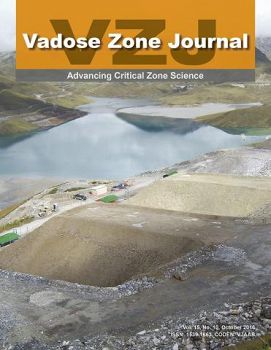Guo and Lin, 2016
Critical Zone Research and Observatories: Current Status and Future Perspectives
Guo, Li and Lin, Henry (2016)
Vadose Zone Journal, vol 15, issue 9
Abstract
The Critical Zone (CZ) is the thin layer of the Earth’s terrestrial surface and near-surface environment that ranges from the top of the vegetation canopy to the bottom of the weathering zone and plays fundamental roles in sustaining life and humanity. The past few years have seen a number of Critical Zone Observatories (CZOs) being developed following the first CZOs established in the United States in 2007. This update summarizes major research findings in CZ science achieved in the past 5 yr or so (2011–2016), especially those obtained from recognized CZOs. A conceptual framework of “deep” science—deep time, deep depth, and deep coupling—is used
to synthesize recent CZ studies across a broad range of spatial and temporal scales. This “deep” science concept emphasizes the integration of Earth surface processes that underlies the contributions of CZ science to terrestrial environmental research. We identify some main knowledge gaps and major opportunities to advance the frontiers of CZ science. We advocate that the CZ scientific community work toward a global network of CZOs to link sites, people, ideas, data, models, and tools. We hope that this update can stimulate continuous scientific advancement and practical applications of CZ science worldwide.
Citation
Guo, Li and Lin, Henry (2016): Critical Zone Research and Observatories: Current Status and Future Perspectives. Vadose Zone Journal, vol 15, issue 9. DOI: 10.2136/vzj2016.06.0050
 This Paper/Book acknowledges NSF CZO grant support.
This Paper/Book acknowledges NSF CZO grant support.
Explore Further



